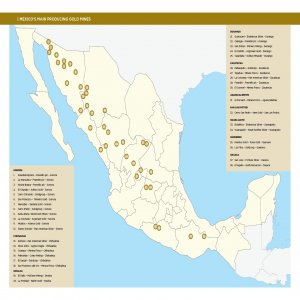Strong Cash Flow Allows for Property Expansion

STORY INLINE POST
Q: What led to the creation of Alamos Gold and how has it evolved since then?
A: Alamos Minerals was originally founded to pursue properties in Mexico in 1994, shortly after the changes to the country’s legal framework in 1993. In November 2001, we entered into a joint venture with another Canadian company, National Gold, to pursue the development of the Mulatos project in Sonora. National Gold struck the original deal to buy the property but due to terrible market conditions, it could not carry the terms of the deal alone, so we stepped in at a very opportune moment. By January 2002, the market had begun to improve. The initial hurdle was raising US$1 million by the end of the year to make the first payment. I had to mortgage my house to put up 10% of the funds, but the rest of the funds swiftly followed. In 2003, we completed the purchase of Mulatos, and Alamos Minerals and National Gold merged to form Alamos Gold. We were initially planning on financing 50% of the construction through equity and 50% through debt, but the loaning banks required us to hedge a third of our production under harsh terms, so we decided to change the direction towards a convertible debenture. We raised approximately US$70 million in initial capital to build Mulatos and to date, it has generated more than US$350 million in free cash flow. With US$375 million in cash and no debt, we have one of the strongest balance sheets in the sector, which allows us to consider additional acquisitions. Since the founding of the company, we have completed three M&A transactions, resulting in the acquisition of projects with a total of more than 6 million ounces of gold resources and 25 million ounces of silver.
Q: What led to the acquisition of the Esperanza Gold Project and where does it stand now?
A: The Esperanza Gold Project is in the state of Morelos and came to us as part of the acquisition of Esperanza Resources, which had spent a considerable amount of time and money developing this exploration project into a significant precious metals asset. Esperanza did not have enough capital to fund the construction of the project so we acquired it in August 2013 for net cash of approximately US$45 million. We are currently working on compiling the environmental impact assessment for the project, which we expect to submit in the first half of 2015.
Q: What are the company’s criteria for identifying strong properties?
A: A strong property is one where we can produce for over ten years at total all-in-costs below US$1,000 per ounce. The acquisition price has to be right. We have found very few projects that meet these requirements, but when we find one, we move aggressively to acquire it. We also seek to buy the properties at the right point in the market. We look for market downturns to make acquisitions when access to financing is difficult and we have the capital for it. Even after the acquisitions of the Esperanza Gold Project, the Quartz Mountain property from Orsa Ventures, and the Kirazli and Aği Daği projects in Turkey, Alamos Gold has no debt, good cash flow, and roughly US$375 million in the bank, which currently represents over a third of our market capitalization.
Q: To what extent have acquisitions helped the company’s share price to recover?
A: The main driver of the share price is the gold price. We were trading near our all-time high of US$21 per share when gold was at US$1,900 an ounce in 2011, but it has since dropped with the gold price plummeting to US$1,200 in 2014. The projects we have acquired are all open-pit mines where we are able to recover gold and silver through heap leaching. This means that they will not be technically challenging or capital intensive to build and will be low-cost operating mines. All our planned development projects make sense even if gold is only at US$1,000 per ounce.
Q: What are your development priorities within the Mexican mining industry?
A: We continue to operate our Mulatos mine and have approximately eight years of mine life remaining based on our reserves at the end of 2013. We depleted the open-pit Escondida high-grade mineralization in the first quarter of 2014 and are transitioning to underground mining at the San Carlos zone. Based on reserves at the end of 2013, we expect San Carlos to supply high grade underground mill feed for the next four years. We also reached an agreement to acquire the surface rights for the Cerro Pelón and La Yaqui satellite deposits at Mulatos earlier in 2014, which we expect to provide low-cost production growth starting in 2016.




















